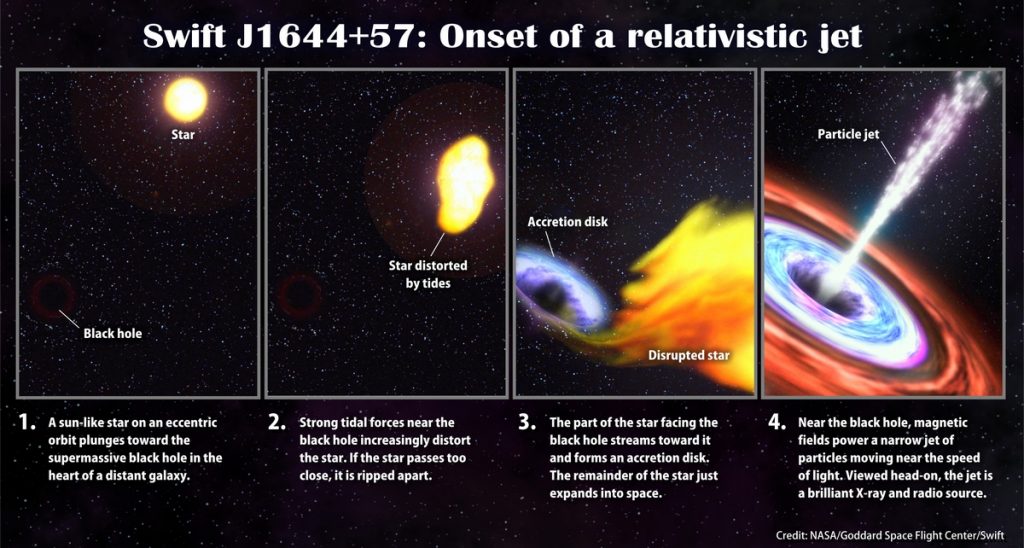Even though it’s one of the most repeating and frankly, a bit dull, themes in science fiction, black holes have never really been considered a possible form of space travel, because scientists have always believed that the mysterious tidal forces inside the event horizon would simply crush anything that would enter it.
In Christopher Nolan’s film Interstellar, a rogue group of scientists make a plan to save Earth from imminent environmental collapse by searching for potentially habitable planets in a distant galaxy. They get there by traveling through a wormhole and using the gravitational pull velocity of a huge black hole.
Scientists are now running new simulation models which are suggesting that a rotating black hole, which contains a unique “mass inflation singularity,” may actually offer safe passage to another part of the galaxy—or a completely different galaxy.
The team of physicists from UMass Dartmouth and Georgia Gwinnett College say their simulations show the singularity at the center of a large, rotating black hole could actually facilitate a safe passage through space-time continuum.
Physicist Gaurav Khanna, his colleague Lior Burko, and his student Caroline Mallary were inspired by the film Interstellar and wanted to test whether its central character could have theoretically survived a descent into the film’s fictional black hole, Gargantua.
Mallary built a computer simulation based on which she concluded:
The effects of the singularity in the context of a rotating black hole would result in rapidly increasing cycles of stretching and squeezing on the spacecraft. But for very large black holes like Gargantua, the strength of this effect would be very small. So, the spacecraft and any individuals on board would not detect it.
Scientific community speculating about exotic properties of black holes has doubled in the past few years. A 2016 study looked into the possibility of five-dimensional black holes shaped like rings which violate the laws of physics, including Einstein’s theory of general relativity. Another paper posited that black holes deposit matter into the far future.

We probably won’t know anything considerable about the actual logistics of traveling via black holes within our lifetime. Humans have yet to visit the nearest planet in our solar system and the nearest black hole, Sagittarius A*—which sits 27,000 light years away at the center of the Milky Way. The latter is not even remotely reachable with today’s propulsion technology and may not be for centuries to come.
However, what we can learn about in our lifetime is how quantum gravity works inside of black holes—buoyed by new advanced telescopes and research methods—which may tell us if it’s physically possible for hyperspace travel using black holes. Even though we humans can’t do it, perhaps other races in the universe can and are visiting us that way.









